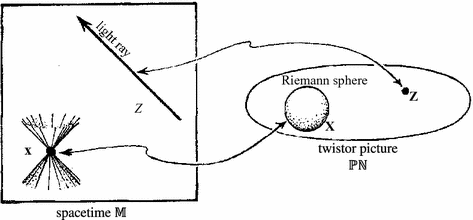Last month’s Quark Matter 2011 conference was a venue for discussion of new results from the first heavy-ion run at LHC energies last fall. I’ve looked a bit at the slides of the talks, but this is an area far from my expertise. One thing I’ve been wondering about is whether the heavily-promoted application of AdS/CFT to studying heavy-ion physics could possibly be tested at the LHC. Does AdS/CFT make any distinctive predictions about how things will change as one goes from RHIC energies to LHC energies, and have these been checked? Looking at the slides, there seem to be all sorts of interesting things being learned about heavy-ion physics, but little mention of AdS/CFT modeling of such phenomena. Perhaps an expert can help by pointing to pre-LHC predictions, and explaining whether they’ve been tested already, or may be in the future.
Symmetry Breaking magazine today does cover Quark Matter 11, with String theory may hold answers about quark gluon plasma, which appears to mostly contain the same hype about string theory and heavy ion physics that has been current for the last half-dozen years now:
Now, scientists have begun to see striking similarities between the properties of the early universe and a theory that aims to unite gravity with quantum mechanics, a long-standing goal for physicists.
Unfortunately there’s nothing in the article about any LHC test of these ideas. The closest we get to that is this from Krishna Rajogopal (his talk is here):
“String theory is like a gift to us,” Rajagopal said. “We’re challenged with understanding the quark-gluon plasma as a liquid, and while string theory doesn’t give us precision, it can help us get a feel for the shape of the subject.”
So, I gather that AdS/CFT makes no precise, testable predictions, with the best case to be made for it that “it can help us get a feel for the shape of the subject”, whatever that means. A question for experts: if “String theory may hold answers about quark-gluon plasma”, what are the questions for which string theory is giving answers, and what does the LHC data have to say about these questions?
Update: David Mateos has posted a write-up of his Quark Matter 2011 talk here. In it, he explains what the problems are with using AdS/CFT to say anything about QCD. In terms of the question of LHC predictions, he gives an example: the dispersion relation of heavy quarkonium mesons moving through the quark-gluon plasma. Unfortunately, this doesn’t look like much of a prediction:
I emphasize that whether one obtains a visible peak, simply a statistical enhancement or an unobservable effect depends sensitively on many parameters related to the in-medium J/Psi physics. The latter is not sufficiently well understood to make a precise prediction, so all one should take away from figure 3(right) is that there could be an observable effect for some values of the parameters within the acceptable range.


